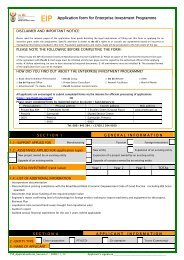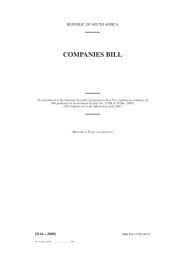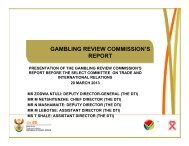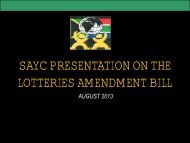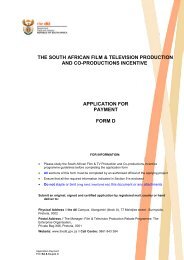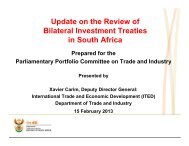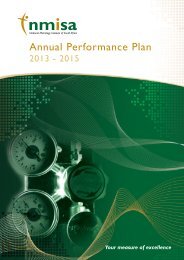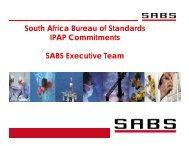Copyright Review Commission Report - ICT Law and Regulation ...
Copyright Review Commission Report - ICT Law and Regulation ...
Copyright Review Commission Report - ICT Law and Regulation ...
- No tags were found...
You also want an ePaper? Increase the reach of your titles
YUMPU automatically turns print PDFs into web optimized ePapers that Google loves.
10.10 CONTRACTUAL RELATIONSHIPS BETWEEN RECORDING ENTITIES AND ARTISTS10.10.1. The pre-2002 contracts could not be examined because the relevant parties could not submit them to the CRC.The post-2002 contracts for the big four recording companies were examined. Those contracts that recognisethe existence of needletime rights make provision for an equal split between the performers <strong>and</strong> the recordingentities. Other contracts make no reference to needletime rights. Advance contracts do not make a distinctionbetween different types of royalty sources; the advances are repayable against any type of income payable tothe artists. In terms of these contracts, the needletime royalty income may be used to repay the outst<strong>and</strong>ingadvances. (All contracts of the big four recording entities were in agreement on this issue.) Almost all contractsexamined were exclusive, i.e. artists are not allowed to contract with more than one recording entityconcurrently.10.10.2. The following areas of improvements were noted on the sample of contracts examined:10.10.2.1. The artists are generally not protected by these contracts (only recording entities are protected). Forexample, if there is disagreement between the parties, the recording entities prevail.10.10.2.2. The contracts provide for two payments from the recording entities to artists per annum, while therecording entities receive cash throughout the year. The contracts make no provision for interestpayable to the artists as a result of the timing differences between the cash receipt dates for therecording entities <strong>and</strong> those for the artists. It is a known fact that recording entities earn interest onmonies waiting for distribution.10.10.2.3. Most of the contracts examined provide for a commission of about 20% on live performance incomegenerated by the artists. The value added by a recording entity is not clear in these cases.10.10.2.4. Some of the recording contracts provide for publishing service (forcing the artists who are alsocomposers to contract for publishing).10.10.2.5. In most cases, income generated via the use of music videos is not shared with the artists.10.10.2.6. The contracts permit the recording entities to terminate or suspend the agreements, should thenecessity arises, but there is no provision permitting the artists to do the same.10.10.2.7. The contracts do not provide for independent mediation or arbitration in contractual disputes.10.10.2.8. Some contracts are automatically renewed on the expiry dates without providing artists withopportunities to negotiate.10.10.2.9. The contracts make no provision for a detailed audit trail listing of all transactions (including allcomputations made) to be provided to the artists so that they can trace the relevant transactions. Thecontracts provide for statements of account. There is a difference between a statement <strong>and</strong> an audittrail. A statement simply lists the transactions <strong>and</strong> does not provide computations or the sources ofeach individual transaction.- 78 -



